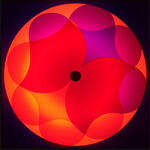Espacio Líquido
Ana Teresa Barboza
Bio
Statement
Ana Teresa Barboza
Title:
Chillón
Medium:
"Tejido en telar con hilo de algodón y oveja y alpaca, teñido con tintes naturales Woven on a loom with cotton and sheep and alpaca thread, dyed with natural dyes"
Year:
2023
Dimensions:
105 x 185 cm
Price: US$ 11,500.00













